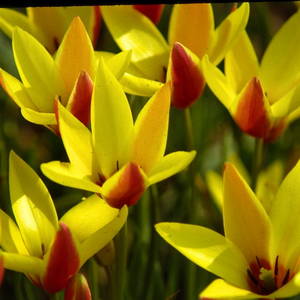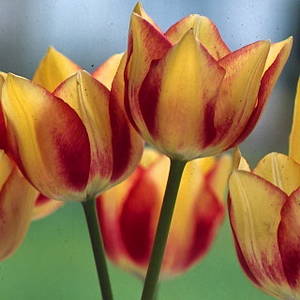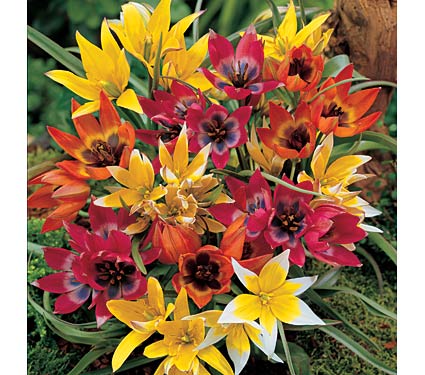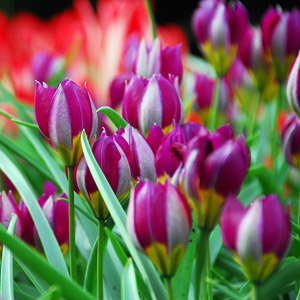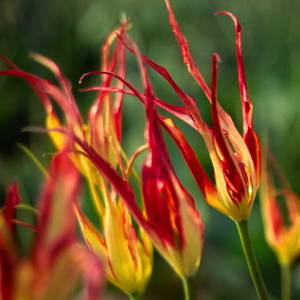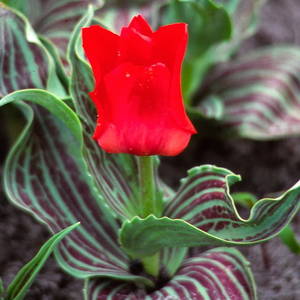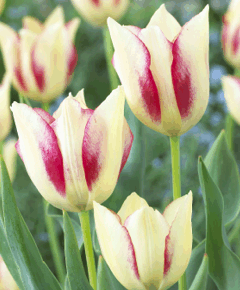Welcome Spring with Species Tulips
/We are all familiar with the grand Dutch hybrid tulips that grace our gardens in late May, and were the cause of the “Tulipmania” frenzy in Holland 400 years ago. But the parent cultivars of those tulips, less well-known but equally beautiful, are the “species” or “botanical” tulips. Smaller and simpler than hybrid tulips, species tulips delight the gardener with vivid colors, diverse forms, interesting foliage and arresting fragrance from early April to early May.
I had always thought that tulips came from Holland, and it wasn’t until a trip to Istanbul ten years ago that I learned that they are actually indigenous to Central Asia. Tulips have been cultivated in Turkey for almost one thousand years, and were brought to Europe by an Austrian ambassador to the Turkish Empire. European gardeners saw a resemblance between the flower's shape and Turkish headwear, and dubbed the flower "tulipan", from "tuilbend", the Turkish word for "turban". Tulips were favored by Ottoman sultans, who staged poetry and musical evenings in their expansive tulip gardens, illuminated by candle lanterns on tortoise backs. The reign of Sultan Ahmed III (1718-1730) is in fact called the “Tulip Era,” an era of peace and tranquility, when tulips enjoyed particular popularity in the arts and folklore. Tulips are still widely used to embellish tiles, ceramics and textiles today, and I happily brought home a souvenir tile set decorated with a tulip motif.
Species tulips still grow wild in the mountain ranges, gorges and remote meadows of Central Asia, but they also thrive in the US zones 4-7, preferring areas where winters are neither too warm or too wet. They prefer full sun and excellent drainage. Unlike hybrid tulips, they are hardy and long-lived. Because they thrive in poor soil and rocky areas, species tulips are a classic choice for rock gardens. They look wonderful planted in casual drifts in the woodland garden or combined with other spring bloomers such as grape hyacinths, windflowers and small early daffodils at the front of the perennial border. Species tulips should be planted in groupings of at least 6 bulbs for best effect, and each bulb should be surrounded by sharp sand during planting. This provides the drainage that they demand and protects the bulbs from tunneling rodents.
With more than 150 cultivars offering a wide range of colors, sizes and interesting foliage, it is easy to develop your own “Tulipmania” for species tulips. Some of the most popular include Tulipa kaufmanniana, the Waterlily Tulip, whose flowers open wide to form six-pointed stars, and T. fosteriana, a bright red species that is widely available. Other notable varieties include T. tarda, with white star-shaped blooms and bright yellow centers, T. clusiana, the Peppermint Tulip, with creamy white and red striped petals and T. pulchella, a small early bloomer. For exotic looks, you can’t beat T. acuminata, the Fireflame Tulip, with its wispy, spidery, yellow and red petals. For fragrance, you can try T. sylvestris, T. marjolettii and the early blooming T. batalini, with its pointed buds that resemble a wizard’s cap.
The greatest selection of species tulips can be found in the fall from mail-order bulb nurseries, including johnscheepers.com, vanengelen.com and brentandbeckysbulbs.com.





